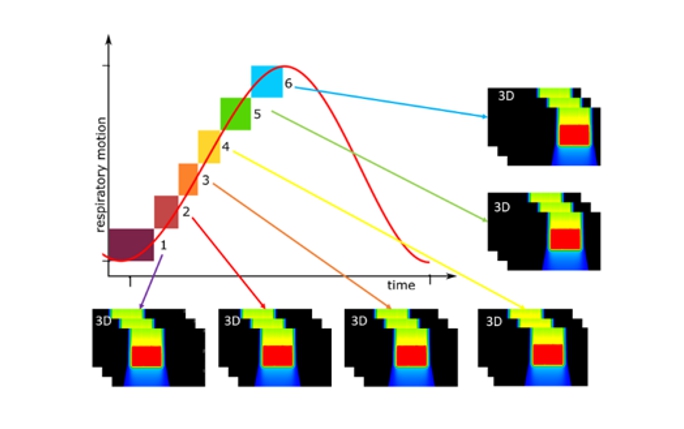Modular, motion-synchronized delivery of conformal treatment plans

The motion team within the Biophysics department at GSI joined forces with CNAO, in Pavia Italy, to implement a sophisticated strategy for delivering conformal radiation volumes to moving tumors.
Most recently, Michelle Lis, an early stage researcher at GSI within the OMA project, has developed the first version of a modular dose-delivery system (DDS) for scanned-ion radiotherapy that mitigates against organ motion artifacts by synchronizing the motion of the ion beam with that of the moving anatomy. This unique approach is a step away from conventional methods, which seek to suppress tumor motion, or that attempt to [continuously track and guide the beam movement]. “We found that conventional approaches, like the tracking method, introduce other problems and can’t really account for all the complexities of respiration, but I think that the motion-synchronized dose delivery strategy that we developed is one that is so versatile and expandable that it can do it.”
Michelle integrated a new motion synchronization system into the DDS existing at CNAO and a copy found at GSI. The DDS is a modular devise, so integration into the GSI environment was possible with just an adaptive layer of software and hardware interfaces.
The method of synchronization comprised three major tasks.
- The creation of a set of 3D treatment plans, where each corresponds to one phase of respiratory motion and together comprises a 4D plan library.
- Monitoring anatomic motion during treatment.
- Synchronizing the ion beam scanning to the detected anatomic motion.
The synchronization was accomplished in real time by repeatedly selecting and delivering an ion beam spot within a 3D plan (the one that most closely corresponded to the current anatomic state) until all plans were delivered. The performance characteristics of the motion synchronization system were tested at both GSI and at CNAO by delivering 4D treatment plans to a moving phantom. Recently, Michelle and her group have published a manuscript describing the results of their initial performance tests. This manuscript, entitled “A modular dose delivery system for treating moving targets with scanned ion beams: performance and safety, characteristics and preliminary tests” has been published in the Physica Medica Journal.
With this work, she has demonstrated, for the first time, that a modular prototype system, can synchronize scanned ion beams with moving targets to deliver conformal, motion-compensated dose distributions. The M-DDS will be further enhanced to treat irregular motion patterns. The system will then undergo extensive safety testing before translating to the clinic.
“Developing a novel method for treating moving tumors has been a wonderful experience. I am proud to contribute to the development of better cancer treatment methods.” After the conclusion of her PhD, Michelle will continue to work in Radiation Oncology, and plans to pursue a career in industry.
Further information
M. Lis, et al., “A modular dose delivery system for treating moving targets with scanned ion beams: Performance and safety characteristics, and preliminary tests”, EJMP Physica Medica 76, pp 307-316 (2020). DOI: https://doi.org/10.1016/j.ejmp.2020.07.029